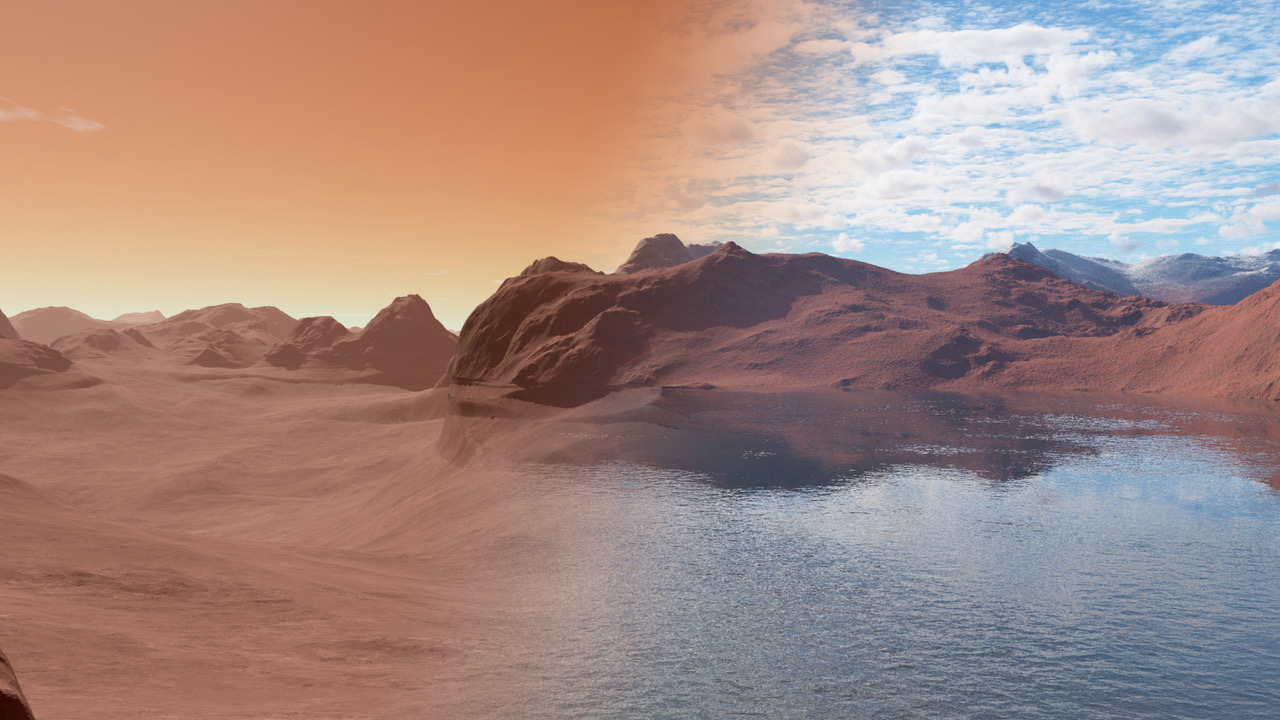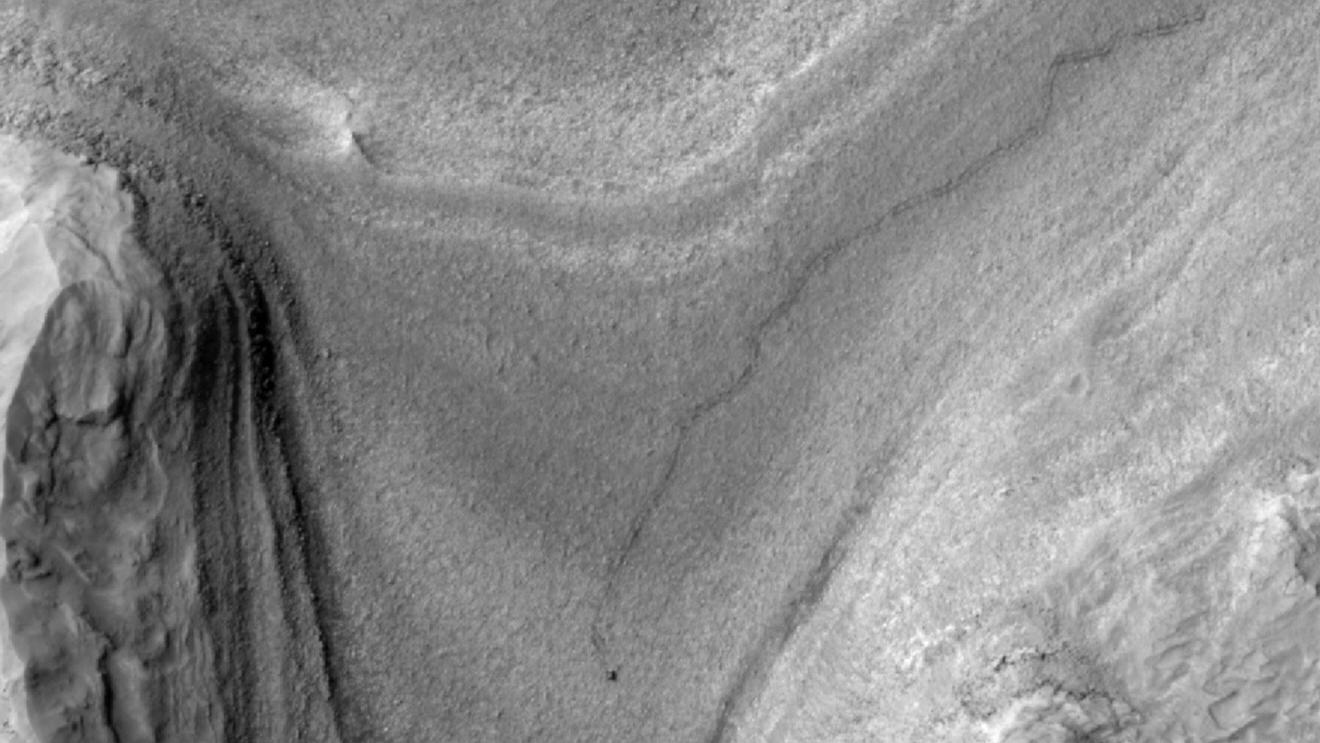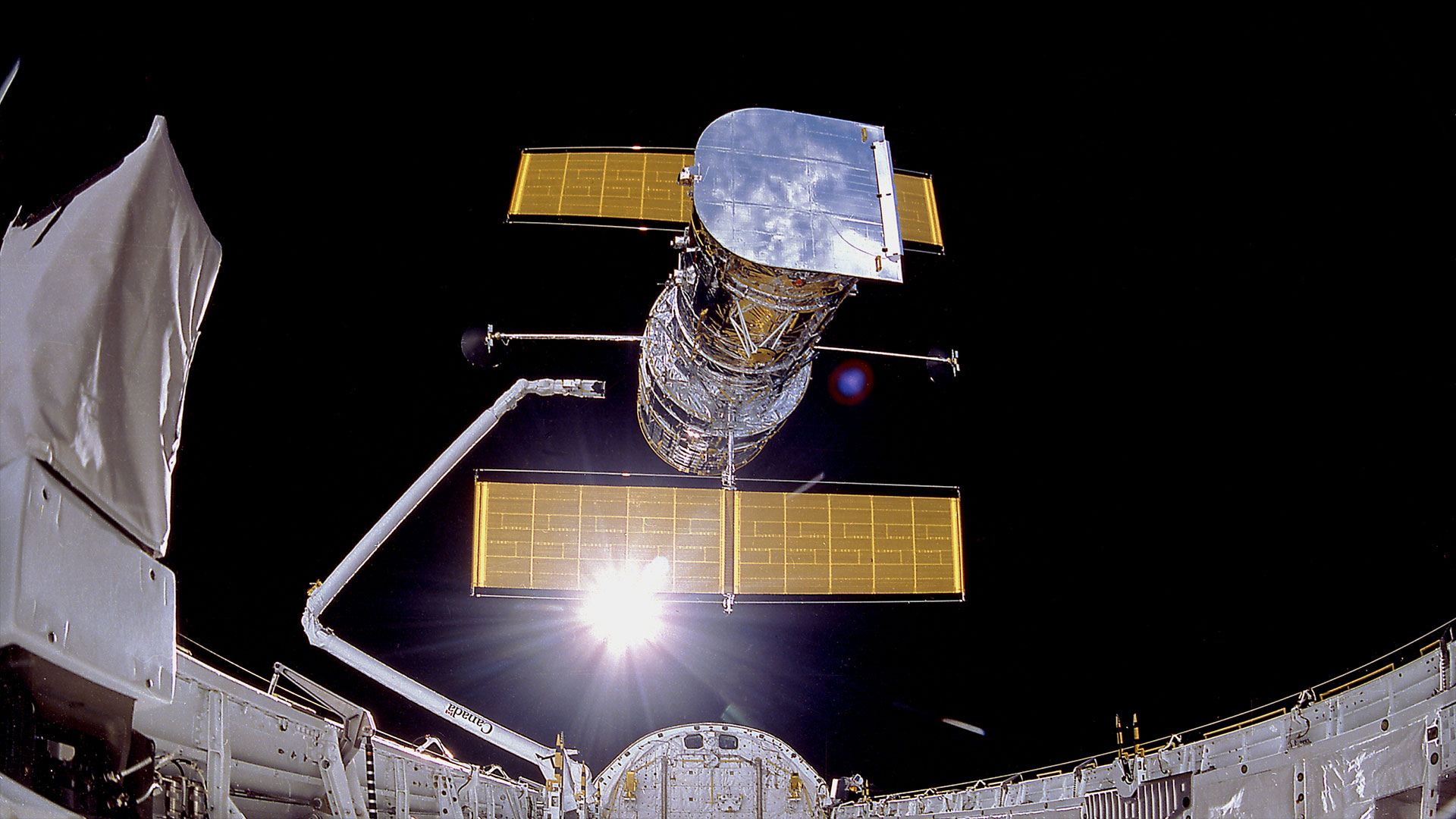Mars' Thirsty Rocks Doomed Red Planet to Dryness

Mars' destiny as a cold, dry world may have been etched in stone at the planet's birth.
Much of the water that flowed and sloshed on the Martian surface billions of years ago was sponged up by thirsty rocks and then buried deep underground, in the Red Planet's mantle, a new study suggests.
This drying-out mechanism was so potent that it likely would have transformed Mars even if the planet hadn't lost some of its liquid water to space and some to the near subsurface, where it's locked away as ice, study team members said. [Photos: Ancient Mars Lake Could Have Supported Life]
"We're suggesting that, irrespective of these two factors, Mars, by virtue of its chemistry, was doomed from the start," lead author Jon Wade, a geologist at the University of Oxford in England, told Space.com via email. "It was likely inevitable that its water would have been sucked back into its mantle."
A changed planet
Shortly after its formation, Mars was a relatively warm and wet world, complete with a thick atmosphere, rivers, lakes and likely even oceans. But this life-friendly environment didn't last: By 3.7 billion years ago, most of the Red Planet's atmosphere, and pretty much all of its surface water, was gone.
Scientists think the key development in this transition was the shutdown of Mars' internal dynamo, which led to the loss of the planet's global magnetic field. This field had protected the Red Planet's atmosphere from the solar wind, the stream of charged particles flowing from the sun. With the field gone, Mars' atmosphere was stripped away, and the planet became much colder and drier. (Earth is about 10 times more massive than Mars and, as a result, still has a functioning dynamo and magnetic field.)
Some of Mars' surface water went underground, where it remains today as ice deposits. And some was split into its constituent hydrogen and oxygen atoms by solar radiation and then lost to space, as happened to the majority of the planet's air.
Get the Space.com Newsletter
Breaking space news, the latest updates on rocket launches, skywatching events and more!
But a portion of the Red Planet's original surface water is still missing, even after these two processes are taken into account. Now, Wade and his team think they know what happened to it.
Iron-rich rocks
The researchers modeled how liquid water interacted with lava on the surfaces of ancient Earth and Mars. They determined that, on the Red Planet, these reactions led to the formation of denser, more iron-rich hydrous minerals — a consequence of the fact that Mars' mantle is more than twice as iron-rich as that of Earth.
This difference has had significant consequences, Wade said.
"On early Earth, hydrated surface rocks would tend to 'float' on the surface until they dehydrate, providing a return path of water to the surface," he said. "However, on [ancient] Mars, these hydrated rocks, bearing dense minerals, may sink into the mantle and act to lock up the water, removing it for good."
If these rock-water reactions were efficient, they could have sequestered huge amounts of water — the equivalent volume of a global Mars ocean at least 1.9 miles (3 kilometers) deep, Wade added.
Doomed from the start, indeed.
The new study, which was published online today (Dec. 20) in the journal Nature, could help researchers better understand why Earth remained capable of supporting surface life, whereas Mars and Venus veered off on their own divergent paths, Wade said. And it could prove helpful to astrobiologists investigating planetary habitability in general, he added.
"It's perhaps not just a question of 'about the right place, right size and right-ish chemistry' when assessing a planet's long-term suitability for life to evolve," Wade said. "It's also important to explore the subtleties, like accretionary history and mantle-rock chemistry. These subtleties may play a significant role on whether the planet's surface can 'hang on' to water for lengths of time that are relevant to the evolution of complex life."
Follow Mike Wall on Twitter @michaeldwall and Google+. Follow us @Spacedotcom, Facebook or Google+. Originally published on Space.com.
Join our Space Forums to keep talking space on the latest missions, night sky and more! And if you have a news tip, correction or comment, let us know at: community@space.com.

Michael Wall is a Senior Space Writer with Space.com and joined the team in 2010. He primarily covers exoplanets, spaceflight and military space, but has been known to dabble in the space art beat. His book about the search for alien life, "Out There," was published on Nov. 13, 2018. Before becoming a science writer, Michael worked as a herpetologist and wildlife biologist. He has a Ph.D. in evolutionary biology from the University of Sydney, Australia, a bachelor's degree from the University of Arizona, and a graduate certificate in science writing from the University of California, Santa Cruz. To find out what his latest project is, you can follow Michael on Twitter.









